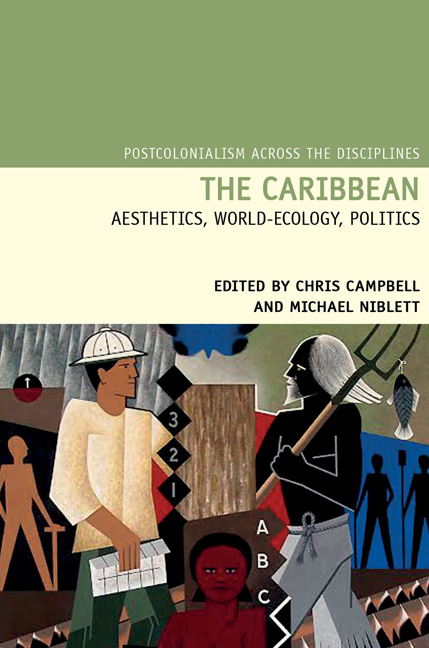Book contents
- Frontmatter
- Contents
- Acknowledgements
- Introduction: Critical Environments: World-Ecology, World Literature, and the Caribbean
- Prologue: The Brutalization of Truth
- Catastrophes and Commodity Frontiers
- Ecological Revolutions and the Nature of Knowledge
- Economies of Extraction: Restructuring and Resistance
- 7 Ecopoetics of Pleasure and Power in Oonya Kempadoo's Tide Running
- 8 Jamaica and the Beast: Negril and the Tourist Landscape
- 9 Ecology, Identity, and Colonialism in Martinique: The Discourse of an Environmental NGO (1980–2011)
- Epilogue: Tingaling
- Notes on Contributors
- Index
9 - Ecology, Identity, and Colonialism in Martinique: The Discourse of an Environmental NGO (1980–2011)
from Economies of Extraction: Restructuring and Resistance
- Frontmatter
- Contents
- Acknowledgements
- Introduction: Critical Environments: World-Ecology, World Literature, and the Caribbean
- Prologue: The Brutalization of Truth
- Catastrophes and Commodity Frontiers
- Ecological Revolutions and the Nature of Knowledge
- Economies of Extraction: Restructuring and Resistance
- 7 Ecopoetics of Pleasure and Power in Oonya Kempadoo's Tide Running
- 8 Jamaica and the Beast: Negril and the Tourist Landscape
- 9 Ecology, Identity, and Colonialism in Martinique: The Discourse of an Environmental NGO (1980–2011)
- Epilogue: Tingaling
- Notes on Contributors
- Index
Summary
Pour le peuple colonisé la valeur la plus essentielle, parce que la plus concrète, c'est d'abord la terre: la terre qui doit assurer le pain et, bien sûr, la dignité
– Frantz Fanon (2002, 47–48)All ecologies have their stories. In this chapter, I investigate the stories and histories through which ecology and ecological claims have come to light on the Caribbean island of Martinique. This so-called ‘overseas department of France’ since 1946 harbours an under-sea colonial history that surfaces from time to time. The numerous monuments to commemorate the abolition of slavery, the contemporary social tensions between the descendants of the enslaved and the descendants of slave owners (the békés), and the much discussed political relations between Martinique and the metropolis ‘France’ (evident in the general strike of early 2009), bring to life stories of slavery and colonialism.
It is in this context that, for the past 40 years, numerous conflicts have taken place regarding the preservation of the forests, mangroves, and natural resources of the island. The first of such ‘ecological conflicts’ dates back to the summer of 1974 in the southern town of Saint-Anne and concerns a tourist project called Asathama. A 11,500-bed hotel complex that not only required the draining of a swamp but also involved the privatization of one of the island's most cherished beaches, the project was blocked by a number of demonstrations led by the local inhabitants. Since then, more than thirty explicitly ecological conflicts have occurred on the island. In 1975, in the town of Rivière-Salée, demonstrations were held against the construction of a private port that required the destruction of part of the local mangrove. More recently, in 2005, a heated struggle over the construction of a mall right inside the mangrove of the central part of the island led to confrontations between demonstrators and police forces. Finally, perhaps the most famous of such conflicts unfolded in 2007 and involved the contamination of the water and soils of Martinique by the carcinogenic molecule called chlordecone (chlordécone), heavily used in the banana industry (Confiant and Boutrin, 2007).
- Type
- Chapter
- Information
- The CaribbeanAesthetics, World-Ecology, Politics, pp. 174 - 188Publisher: Liverpool University PressPrint publication year: 2016



